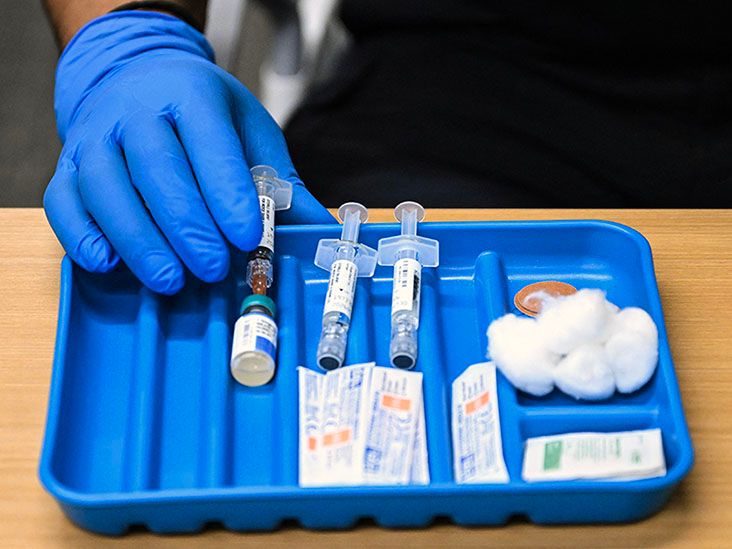Atypical lymphocytes are types of white blood cells that a person’s immune system produces. They help fight infections and diseases. High levels of atypical lymphocytes may indicate certain health conditions.
Lymphocytes are a type of white blood cells that help a person’s body fight infections and diseases. They are
- B lymphocytes make antibodies, which help a person’s immune system fight pathogens such as bacteria and viruses.
- T lymphocytes help destroy tumor cells and cells that are infected with pathogens. They also control the body’s immune responses.
Both types come from stem cells in a person’s bone marrow and then circulate in the person’s blood and lymphatic system.
This article discusses atypical lymphocytes, including what they are, what high levels of them may indicate, what their normal range may be, blood tests that detect them, and when to speak with a doctor about them.

Atypical lymphocytes are lymphocytes that activate as part of the body’s response to infections. They are
Healthcare professionals
If a person has high levels of atypical lymphocytes, it may mean they are experiencing a viral or bacterial infection. The levels rise as a person’s body produces more atypical lymphocytes to fight infections.
These infections
Additionally, people with COVID-19 may have more atypical lymphocytes.
High levels of atypical lymphocytes
Infections that may cause lymphocytosis and involve atypical lymphocytes
- Bartonella henselae, a type of bacteria that can cause cat scratch fever
- Bordetella pertussis, a type of bacteria that can cause whooping cough
- Toxoplasma gondii, a parasite that can cause toxoplasmosis
Lymphocytosis
In CLL, a person’s immune system makes too many abnormal lymphocytes. These lymphocytes cannot fight infection very well and displace other healthy cells from a person’s blood. This may lead to:
- infections
- anemia
- easy bleeding
In the early stages of CLL, a person may not have any signs or symptoms of the condition. However, blood tests may detect high levels of lymphocytes, including atypical lymphocytes, and indicate that a person has CLL.
Cancer resources
To discover more evidence-based information and resources for cancer, visit our dedicated hub.
People usually have some atypical lymphocytes in their blood. Overall lymphocyte levels vary with age and other factors. Healthcare professionals typically express lymphocyte levels as a percentage of a person’s white blood count (WBC). A WBC is a breakdown of the five types of white blood cells in a person’s blood.
Healthcare professionals have not yet established a universal normal range for atypical lymphocyte levels.
A 1967 study published in The American Journal of Medicine suggests that in a “normal man,” atypical lymphocytes make up 12% or less of the mononuclear cells, which are blood cells that have a single, round nucleus, such as lymphocytes. However, scientists have not confirmed this statistic in modern research.
If a person has leukocytosis (an elevated WBC), their body may produce more lymphocytes. This can lead to lymphocytosis, in which a person’s absolute lymphocyte count is greater than 4,000 lymphocytes per microliter of blood.
Healthcare professionals may use blood tests
- Complete blood count (CBC): This is a comprehensive blood test that allows doctors to check each type of cell in a person’s blood, including the number of lymphocytes.
- Flow cytometry: Doctors can use these tests to measure the levels of the different types of lymphocytes in a person’s blood, which may include atypical lymphocytes.
Doctors typically perform blood tests in a professional healthcare setting such as a hospital or medical office. A healthcare professional will use a needle to take a sample of a person’s blood. They will send this sample to a laboratory for testing. Doctors will later use the results to diagnose a person’s condition.
Some blood tests may require people to follow special instructions, such as not eating or drinking for a period of time beforehand. A person should speak with a doctor about what to expect and whether they need to follow any instructions leading up to a blood test.
High atypical lymphocyte levels
Some infections or conditions may not cause any symptoms, particularly in early stages. Therefore, it is important that doctors determine the cause of a person’s high atypical lymphocyte levels so they can recommend appropriate treatment.
CLL does not
- painless swelling of lymph nodes in the neck, armpits, stomach, or groin
- weakness
- fatigue
- fever and infection
- bleeding or bruises that happen easily
- unintentional weight loss
- petechiae, which are flat, dark, pinprick-like red spots under the skin caused by bleeding
- drenching night sweats
A person can speak with a healthcare professional about their lymphocyte levels and what those levels may indicate.
Atypical lymphocytes are a type of white blood cells that a person’s body produces to fight infections and diseases.
High lymphocyte levels and the presence of atypical lymphocytes usually indicate an infection. High lymphocyte levels may also indicate that a person has certain types of leukemia, such as CLL.
Blood tests may help determine someone’s overall lymphocyte levels and detect atypical lymphocytes.
A person should speak with a healthcare professional about any new or unusual symptoms they are experiencing. People can also speak with a healthcare professional about their lymphocyte levels.


